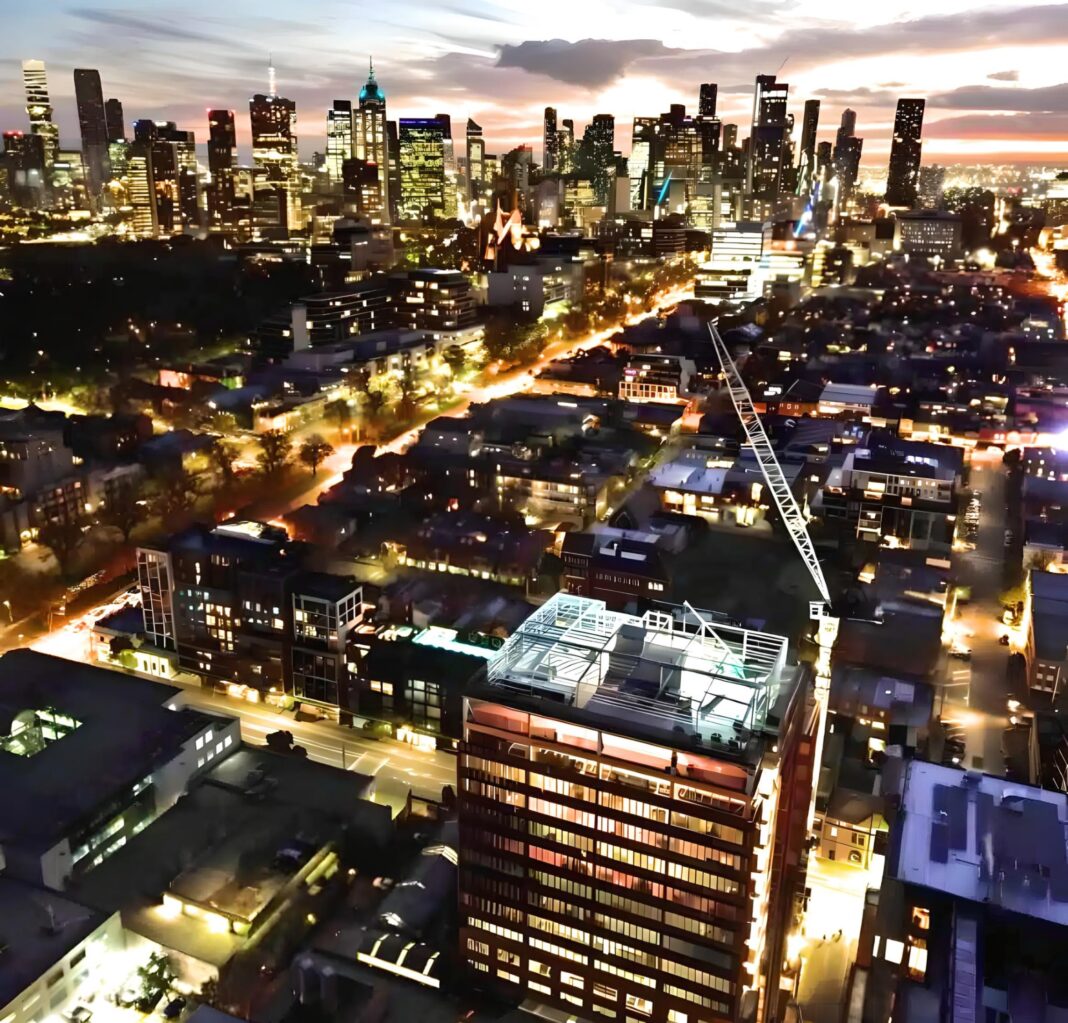Melbourne must decarbonise at least 80 commercial buildings every year for the city to meet its net-zero targets.
That is according to Melbourne’s Deputy Mayor, Nicholas Reece, who spoke at the launch of a new report pushing all levels of government to take leadership in developing net-zero-ready buildings and establishing a national framework to measure embodied carbon.
The report, ‘Every Building Counts,’ was published by the Property Council and the Green Building Council of Australia.
“Existing buildings contribute 66 per cent of our current carbon emissions”, according to Deputy Mayor Reece, a huge concern for local government.

Across six key themes, the report provides 19 policy recommendations for governments to drive down carbon emissions across all buildings – commercial and residential.
The push to decarbonise has the support of Federal Minister for Climate Change and Energy Chris Bowen, Lord Mayor of Brisbane Adrian Schrinner and Lord Mayor of Melbourne Sally Capp.
In the report, Lord Mayor Schrinner said net zero “is vitally important as we head towards the Brisbane 2032 Olympic and Paralympic Games.”
As Australia’s largest carbon-neutral government organisation, “it is working hard to deliver practical solutions to improve sustainability.”
According to Davina Rooney, CEO of the Green Building Council of Australia, the report will help governments define clear, long-term strategies to deliver zero carbon-ready and resilient buildings.
Ms Rooney strongly supports the push to use timber in buildings and yesterday revealed that timber-rich 5-Star and 6-Star Green Star projects have surged in recent years.
“Our local governments have been at the global forefront of climate action innovation,” Ms Rooney said.
The plan calls on the government to mandate that all buildings be net-zero-carbon ready by 2050 and that the government takes a leadership role in ensuring that all government-owned and leased buildings are net-zero by 2030.
For example, in 2019, the total office space occupied by the Australian Government was more than 14.5 million square metres.
It also pushes to reduce up-front carbon emissions, with buildings “built using materials with significantly lower embodied carbon.”

Yesterday, Ms Rooney said this would lead to a pivot by landlords and developers focusing on the construction process rather than the operational performance of buildings.
According to Simon Dorries, CEO of Responsible Wood and Chair of the TM11 – which manages the Australian Standard for Engineered Wood Products, the push to target upfront carbon emissions provides a significant opportunity for the Australian timber industry.
“That’s a lot of demand for structural timber (in greenfield construction) and also appearance grade timbers (in retrofitted brownfield construction),” Mr Dorries said.
Responsible Wood manages the Australian Standard for Sustainable Forest Management, with more than 90% of Australian timber products carrying the certification.
It’s recognised as part of the GBCA Responsible Products Framework, with Green Star projects using certification to meet Green Star points.
Australian Sustainable Hardwoods, one of the country’s largest manufacturers, has used Responsible Wood certification to deliver 5-star and 6-star timber-rich projects.
Australian Sustainable Hardwood’s Business Development Director, Daniel Wright, told the Wood Central Publisher, “Timber is ideally suited to drive reductions in embodied carbon across new structural projects but also in refurbishments and fit-outs.”
Yesterday, MASSLAM, Australian Sustainable Hardwoods’s glue-laminated timber solution, became Australia’s first mass timber glulam system to hold Engineered Wood Products Association of Australasia certification.

The system has been used in the T3 Collingwood – Australia’s tallest mass timber building and the first to be funded under the Australian Clean Energy Finance Corporation’s Timber Encouragement Policy.
But it is not just greenfield construction where timber can utilised to drive lower embodied carbon, according to Andrew Dunn, CEO of the Timber Development Association.
“You only need to look at the Walsh Bay Arts Precinct, where the original timbers were restored and reused in the award-winning project.”
The Sydney Morning Herald describes it as “timber cathedrals,” it was designed by award-winning architect Peter Tonkin, a director of Tonkin Zulaikha Greer Architects and is home to nine arts companies, including the Australian Chamber Orchestra.



Mr Dunn, the organiser of the Australian Timber Design Awards, said the project secured the Australian Timber Design Awards for Interior Commercial and the People’s Choice Award – awarded to the project that received the most votes from the public.
The timber, mostly preserved from its original installation 100 years ago, contrasted beautifully with the modern theatre and dance stage.
“And you only have to look at the venue where we are hosting this year’s awards, at Cargo Hall,” Mr Dunn said.
Previously a working harbour, the venue was brought back to life in 2013 after being converted into one of Melbourne’s best-known event spaces.
“Appropriately, recycled wood has been used greatly in the total rebuild.”
- For more information about the Timber Design Awards, including ticket availability, visit the dedicated Timber Design Awards website.






